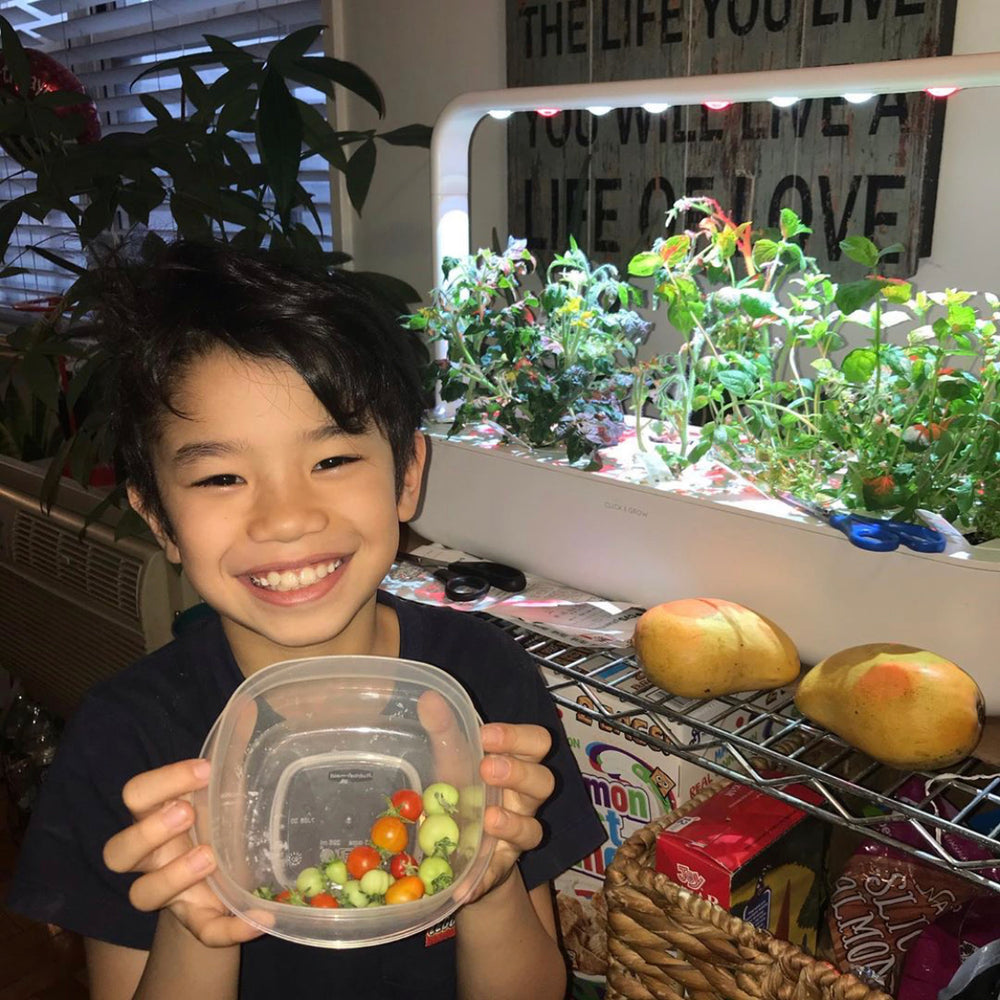News
Educational Activities for Kids: Indoor Gardening

Keeping young ones entertained during lockdown is no easy task. If you’re looking for an educational activity to fight boredom, why not grow an indoor garden together? Garden-based learning has a positive effect on childhood development. This includes stress relief, better nutrition and improved motor skills. There’s even research to suggest gardening can help them excel as science students.
Indoor gardening is a great opportunity to help kids connect with nature, especially when much of the outdoor world is restricted. It helps keep their imagination alive and gets them to focus on the wider world. All you need to get started is your smart garden and some plant pods. Here are just a few of the many ways indoor gardening will benefit them:
Kids learn about how plants grow
Growing plants with kids encourages them to think about cause and effect. It’s a chance to discuss how seeds grow and why plants need light, water and periods of darkness. Having your smart garden as a visual reference will keep it fun and entertaining. A smart garden gives them hands-on experience of growing plants. The majority of Click & Grow plants sprout within 1-2 weeks so they won’t have to wait long before noticing some growth!
Kids learn the value of fresh food
Kids develop a healthy sense of pride as they get to eat food they’ve grown themselves. The whole process gives them an appreciation of how plants need to be nurtured so that they can feed our bodies. As they watch their plants grow, it’s an opportunity to discuss where food originates (ie. not in the fridge or in supermarkets!) and why fresh food is good for your health.
Kids learn about caring for the environment
When growing food as a family, a great question to ask is, ‘what are the advantages of growing our own food at home?’ This opens the door to talk about how eating homegrown food is a way to care for the environment. This is especially true considering food is often transported hundreds of miles to reach supermarket shelves. More vehicles on roads means more pollution. Kids will feel proud knowing that, by growing some of your own food, they’re contributing to a cleaner environment. It’s also a chance to talk about food waste and how growing their own food can help them minimise this. When growing food in a smart garden, you as a family have control over the amount of food that is grown, helping to cut back on waste.

Activities to try
Here are a few examples of how to use your smart garden to explore questions about nature and the environment. Feel free to adapt them according to your family’s needs and be inspired to create your own activities to do together!
Germination and growth
Save 3 growing holes in your smart garden (a Smart Garden 3 is perfect for this).
Fill one with sand, one with garden soil and one with Click & Grow Smart Soil (use an experimental pod). Plant seeds in each hole, then compare how they germinate and grow.
Questions to discuss:
- How do plants get their nutrients for growing and what role does soil play in this?
- Is it possible for plants to grow without soil?
- How can we keep soil in good health?
- How much of the world's land is suitable for growing crops?
Learning about the greenhouse effect
Insert new plant pods into your smart garden. Add transparent domes for some of them but leave the others without.
Observe:
- Do seeds germinate faster with or without domes?
Discuss:
- What is the greenhouse effect?
- Is the greenhouse effect good or bad for plants?
- Is the greenhouse effect good or bad for humans?
Learning how light affects plants
Grow a herb, flower and fruiting plant (eg. basil, painted nettle and dwarf pea) in two separate smart gardens. Use the lamp as normal for the first garden. Don’t use the lamp at all for the second garden.
Observe:
- Do all plants have similar light requirements?
- How do plants compensate for low light conditions?
Discuss:
- What is photosynthesis?
- Why do plants need resting time in the darkness?
- What happens if plants don’t get enough light?
- What happens if the temperature is too low or too high?
- Which plants like to grow in warmer climates / in colder climates?
If indoor gardening is a hobby you and your family enjoy, consider our customisable subscription to save time and money.
For further reading, check out our posts:
Growing with indoor smart gardens: 2 moms share their experiences